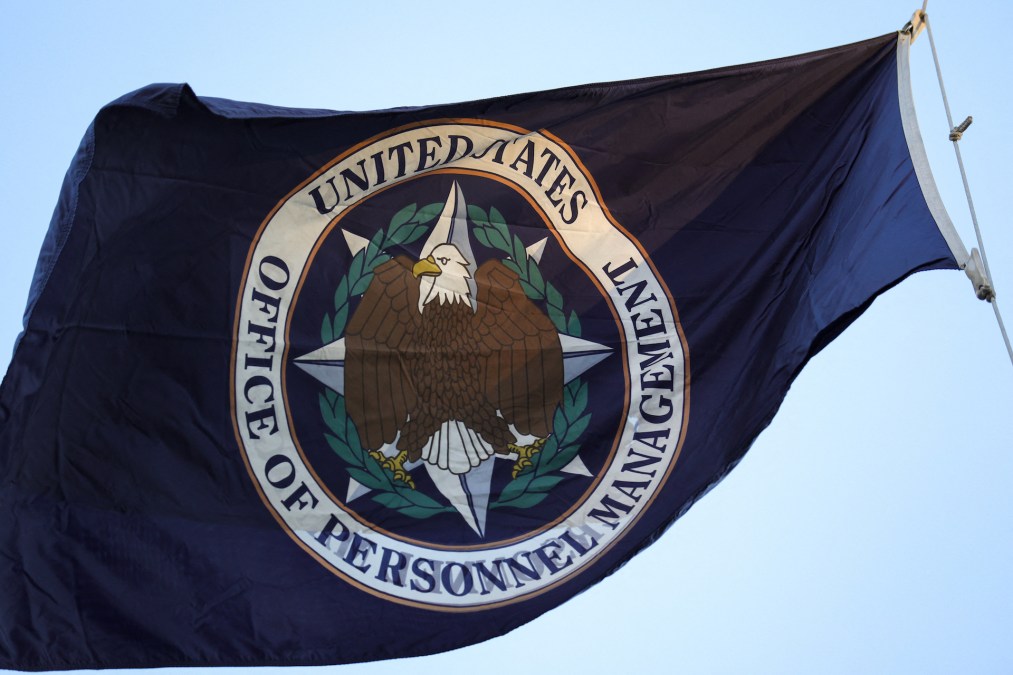Lawyer linked to DOGE is defending OPM mass email system lawsuit

A lawyer who’s said to have played a central role in the Department of Government Efficiency’s attempted takeover of at least one federal organization is now defending in court the DOGE email system used to send email blasts to the entire U.S. government workforce.
During a Feb. 6 hearing, Jacob Altik joined the defense in the ongoing lawsuit where pseudonymous federal workers have accused the Office of Personnel Management of standing up its new governmentwide email system with inadequate privacy and security protections in place. While the defense introduced him at the time as being “from OPM,” counsel for the plaintiffs filed a new notice early Monday essentially connecting the dots that Altik, through other lawsuits and public reports, has played a hands-on role in supporting the DOGE.
Altik was first identified as a DOGE lawyer with an official DOGE email address hosted by the Executive Office of the President in a ProPublica article from early February, the Monday legal notice notes. An associate for the D.C. law firm Weil, Gotshal & Manges and a former clerk for Judge Neomi Rao in the D.C. Circuit Court of Appeals, Altik is also slated to be a clerk in the upcoming Supreme Court 2025-2026 term for Associate Justice Neil Gorsuch, the article states.
In a Jan. 20 executive order bringing the DOGE to life as part of the U.S. Digital Service, now renamed the U.S DOGE Service, President Donald Trump ordered federal agencies to create DOGE Teams, which would “typically include one DOGE Team Lead, one engineer, one human resources specialist, and one attorney.”
In addition to the ProPublica story, Altik was identified in a separate ongoing lawsuit as working hand-in-hand with DOGE associates in the organization’s attempt to dismantle the U.S. African Development Foundation, whose mission is closely tied to the broader scope of the recently shuttered U.S. Agency for International Development.
In the lawsuit, which argues only Congress can dissolve the U.S. African Development Foundation, Elisabeth Feleke, chief program officer of USADF, swore in testimony that Altik was one of three people presenting themselves as DOGE members who landed at the foundation Feb. 21 following the issuance of a Feb. 19 executive order calling for its reduction to “minimum presence and function” within 14 days. After signing a memorandum of understanding related to purported IT matters, that team provided a reduction in force plan to slash the organization’s staff to only its board and CEO, Feleke testified.
Altik, who “stated that he was a lawyer from the White House Personnel Office,” threatened that “if the Board didn’t approve the plan, the Board would be dismissed,” Feleke wrote. Then, Altik and another DOGE member “demanded immediate access to USADF systems including financial records and payment and human resources systems, which include staff job descriptions, personnel files, salaries, and organizational structure.” She said the team “secured the memorandum of understanding under false pretenses — stating that they would modernize our computer systems but then attempting to shut down USADF,” leading the agency’s general counsel to withdraw from it.
Bringing things back to the OPM case, Kel McClanahan, counsel for the plaintiffs, wrote in the Monday notice that with the relevant information about Altik, “it has become apparent that [Department of Justice attorney] Ms. [Elizabeth] Shapiro may have misrepresented — knowingly or unknowingly — his affiliation to the Court on 6 February — perhaps to preserve the illusion that OPM’s counsel were ignorant of what OPM was doing with the Government-Wide Email System, or perhaps to obscure the role of DOGE and the White House in this case.”
McClanahan also said because of Altik’s reported connection to the DOGE, “the Court should demand testimony from Mr. Altik about what he knew about the GWES system and when he knew it before it assigns any value to OPM’s arguments about the lack of its counsel’s understanding” about what OPM has represented in key privacy assessments for the system.
In February, while litigation for this case was active, OPM replaced the email system’s privacy impact assessment that is central to the lawsuit without notice, swapping out key language that was the basis for a motion for sanctions filed by plaintiffs that same day in federal court.
“A lawyer who claims to work for three separate offices and has the authority to unilaterally dismiss board members from a federal agency would definitely know what one of those offices — which he claims to represent — was doing with such a critical piece of information technology,” McClanahan wrote in Monday’s notice.
Defense attorneys issued a response to the notice Monday afternoon, calling the filing and its accompanying argument “ridiculous on its face.”
Officials from the Department of Justice claim that “in identifying Mr. Altik along with other counsel appearing on behalf of Defendants, Ms. Shapiro was not making any broader representation about Mr. Altik, including any relationship he may have or have had with other governmental components then, in the past, or in the future. She was simply introducing him and other counsel at counsels’ table, a routine step lawyers take at virtually every hearing in this Court and in other courts. Mr. Altik was not discussed at the hearing after this initial reference; he was simply present.” The response doesn’t mention DOGE or Altik’s connection.
McClanahan told FedScoop: “This guy seems like he has his fingers in all the DOGE pies, and if anyone would be unable to claim ignorance of what was going on in DOGE, all evidence points to it being him. When DOJ lawyers across the country are all singing the same refrain that they just don’t know the answers, sorry Your Honor, Jacob Altik should be at the top of every plaintiff’s lawyer’s call sheet.”
Since plaintiffs first filed their initial lawsuit, OPM has used its governmentwide email system to facilitate sending email blasts to all federal workers about the administration’s deferred resignation plan and to solicit five bullet points from federal workers about the work they’d accomplished the week prior.






